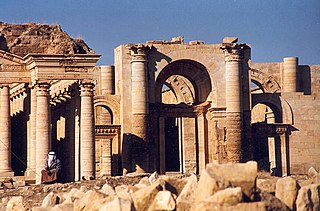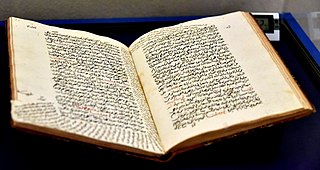 W
WʿAjā'ib al-makhlūqāt wa gharā'ib al-mawjūdāt, The Wonders of Creation is a book in Arabic and an important work of cosmography by Zakariya al-Qazwini, who was born in Qazwin in the year 600 AH/1203 AD.
 W
Wal-ʿIqd al-Farīd is an anthology attempting to encompass 'all that a well-informed person had to know in order to pass in society as a cultured and refined individual', composed by Ibn ʿAbd Rabbih (860–940), an Arab writer and poet from Cordova, now in Spain.
 W
WThe medieval story of al-Nadirah is about the fall of Hatra and its princess, who fell in love with the young king Shapur I while he was besieging the city.
 W
WAntarah ibn Shaddad al-Absi, also known as ʿAntar, was a pre-Islamic Arab knight and poet, famous for both his poetry and his adventurous life. His chief poem forms part of the Mu'allaqāt, the collection of seven "hanging odes" legendarily said to have been suspended in the Kaaba. The account of his life forms the basis of a long and extravagant romance.
 W
WBarlaam and Josaphat are legendary Christian martyrs and saints. Their life story is very likely to have been based on the life of the Gautama Buddha. It tells how an Indian king persecuted the Christian Church in his realm. When astrologers predicted that his own son would some day become a Christian, the king imprisoned the young prince Josaphat, who nevertheless met the hermit Saint Barlaam and converted to Christianity. After much tribulation the young prince's father accepted the Christian faith, turned over his throne to Josaphat, and retired to the desert to become a hermit. Josaphat himself later abdicated and went into seclusion with his old teacher Barlaam. The tale derives from a second to fourth century Sanskrit Mahayana Buddhist text, via a Manichaean version, then the Arabic Kitāb Bilawhar wa-Būd̠āsaf, current in Baghdad in the eighth century, from where it entered into Middle Eastern Christian circles before appearing in European versions. The two were entered in the Eastern Orthodox calendar with a feast-day on 26 August, and in the Roman Martyrology in the Western Church as "Barlaam and Josaphat" on the date of 27 November.
 W
WThe Kitab al-Bulhan, or Book of Wonders, or Book of Surprises, is a mainly 14th century Arabic manuscript compiled – and possibly illustrated – by Abd al-Hasan Al-Isfahani. The codex was probably bound during the reign of Jalayirid Sultan Ahmad (1382-1410) at Baghdad, and includes texts on astronomy, astrology, geomancy and a section of full-page illustrated plates dedicated to each discourse topic, e.g. a folktale, a sign of the zodiac, a prophet, etc.
 W
WDictes and Sayings of the Philosophers is an incunabulum, or early printed book. The Middle English work is a translation, by Anthony Woodville, of an original book written in Arabic by the medieval Arab scholar al-Mubashshir ibn Fatik', titled Mukhtār al-ḥikam wa-maḥāsin al-kalim which had been translated into several languages. Woodville based his version on an earlier French translation. His translation would come to be printed by William Caxton in 1477 as either the first, or one of the earliest, books printed in the English language.
 W
WHadith Bayāḍ wa Riyāḍ is a 13th-century Arabic love story. The main characters of the tale: Bayad, a merchant's son and a foreigner from Damascus, Riyad, a well-educated slave girl in the court of an unnamed Hajib of 'Iraq (Mesopotamia), and a "Lady" (al-sayyida).
 W
WḤayy ibn Yaqẓān is an Arabic philosophical novel and an allegorical tale written by Ibn Tufail in the early 12th century in Al-Andalus. The name by which the book is also known include the Latin: Philosophus Autodidactus ; and English: The Improvement of Human Reason: Exhibited in the Life of Hai Ebn Yokdhan. Ḥayy ibn Yaqẓān was named after an earlier Arabic philosophical romance of the same name, written by Avicenna during his imprisonment in the early 11th century, even though both tales had different stories. The novel greatly inspired Islamic philosophy as well as major Enlightenment thinkers.
 W
WAbū ʿUthman ʿAmr ibn Baḥr al-Kinānī al-Baṣrī, commonly known as al-Jāḥiẓ was an Arab prose writer and author of works of literature, Mu'tazili theology, zoology, and politico-religious polemics.
 W
WKalīla wa-Dimna is a book containing a collection of fables. It was translated into Arabic in the Abbasid age specifically in the second hijri century by Abdullah ibn al-Muqaffa using his own writing style. A lot of researchers have agreed that the book goes back to Indian roots, and was based on the Sanskrit text Pañcatantra. Then it was translated into Pahlavi language at the beginning of the sixth Gregorian century by orders from Khosrow I.
 W
WKitab al-Aghani, is an encyclopedic collection of poems and songs that runs to over 20 volumes in modern editions, attributed to the 10th-century Arabic writer Abu al-Faraj al-Isfahani. Abu al-Faraj claimed to have taken 50 years in writing the work, which ran to over 10 000 pages and contains more than 16,000 verses of Arabic poetry. It can be seen as having three distinct sections: the first dealing with the '100 Best Songs' chosen for the caliph Harun al-Rashid, the second with royal composers and the third with songs chosen by the author himself. It spans the period from pre-Islamic times to the end of the 9th century CE. Abu al-Faraj importantly included performance directions for many of the songs included in Kitab al-Aghani. Due to the accompanying biographical annotations on the personages', the work is an important historical and historical source; it is also useful for those interested in the sociology of Arabic literature.
 W
WKitab al-I'tibar is the autobiography of Usama ibn-Munqidh, an Arab Syrian diplomat, soldier of the 12th century, hunter, poet and nobleman.
 W
WLayla & Majnun is an old story of Arabic origin, about the 7th-century Najdi Bedouin poet Qays ibn al-Mulawwah and his ladylove Layla bint Mahdi.
 W
WThe 7th century letter of Ali ibn Abi Talib to Malik al-Ashtar was sent by the Islamic leader Ali to Malik al-Ashtar, a loyal supporter who served as the governor of Egypt. The letter advises Malik al-Ashtar how to treat the people of Egypt justly. It has come to be seen by some as a model of just Islamic governance.
 W
WThe Luzūmiyyāt is the second collection of poetry by Al-Ma'arri, comprising nearly 1600 short poems organised in alphabetical order and observing a novel double-consonant rhyme scheme devised by the poet himself.
 W
WMaqāmah are an (originally) Arabic prosimetric literary genre which alternates the Arabic rhymed prose known as Saj‘ with intervals of poetry in which rhetorical extravagance is conspicuous.
 W
WMaqamat Badi' al-Zaman al-Hamadhani, are an Arabic collection of stories from the 9th century, written by Badi' al-Zaman al-Hamadani. Of the 400 episodic stories, roughly 52 of which have survived.
 W
WMarwah wa al-Majūn al-Faransi is a classical Middle Eastern love story. It is based on the legend of a young man named Shams al Faransy from Central Asia, born during the 14th century. There were many Arabic versions of the story at the time.
 W
WMeadows of Gold and Mines of Gems is an historical account in Arabic of the beginning of the world starting with Adam and Eve up to and through the late Abbasid Caliphate by medieval Baghdadi historian Al-Masudi.
 W
WThe Nahj al-Balagha is the most famous collection of sermons, letters, tafsirs and narrations attributed to Ali Ibn Abi Talib, cousin and son-in-law of Muhammad. It was collected by Ash-Sharif Ar-Radhi, a Shia scholar in the 10th century AD Known for its eloquent content, it is considered a masterpiece of literature in Shia Islam.
 W
WOne Thousand and One Nights is a collection of Middle Eastern folk tales compiled in Arabic during the Islamic Golden Age. It is often known in English as the Arabian Nights, from the first English-language edition, which rendered the title as The Arabian Nights' Entertainment.
 W
WThe Panchatantra is an ancient Indian collection of interrelated animal fables in Sanskrit verse and prose, arranged within a frame story. The surviving work is dated to roughly 200 BCE – 300 CE, based on older oral tradition. The text's author has been attributed to Vishnu Sharma in some recensions and Vasubhaga in others, both of which may be pen names. It is classical literature in a Hindu text, and based on older oral traditions with "animal fables that are as old as we are able to imagine".
 W
WThe Perfumed Garden of Sensual Delight is a fifteenth-century Arabic sex manual and work of erotic literature by Muhammad ibn Muhammad al-Nefzawi, also known simply as "Nefzawi".
 W
WPicatrix is the name used today for a 400-page book of magic and astrology originally written in Arabic under the title Ghāyat al-Ḥakīm, which most scholars assume was originally written in the middle of the 11th century, though an argument for composition in the first half of the 10th century has been made. The Arabic title translates as The Aim of the Sage or The Goal of The Wise. The Arabic work was translated into Spanish and then into Latin during the 13th century, at which time it got the Latin title Picatrix. The book's title Picatrix is also sometimes used to refer to the book's author.
 W
WThe Qiṣaṣ al-'Anbiyā' or Stories of the Prophets is any of various collections of stories adapted from the Quran and other Islamic literature, closely related to exegesis of the Qur'an. One of the best-known is a work composed by the Persian author Abū Ishāq Ibrāhīm bin Mansūr bin Khalaf of Neyshābūr the 12th century AD ; another was composed by Muhammad al-Kisai in the 8th century AD ; others include the Ara'is al-Majalis by al-Tha'labi and the Qasas al-Anbiya by Ibn Kathir. The Fatimid Ismaili jurist Qadi al-Nu’man also discusses the story (qiṣṣa) of the Birth of Jesus, explaining its esoteric significance (taʾwīl) in his Foundation of Esoteric Interpretation. The narrations within the Qisas Al-Anbiya, are not about historical accuracy, but rather about wisdom and moral teachings.
 W
WRiḥla refers to both a journey and the written account of that journey, or travelogue. Associated with the medieval Islamic notion of "travel in search of knowledge", the riḥla as a genre of medieval and early-modern Arabic literature usually describes a journey taken with the intent of performing the Hajj, but can include an itinerary that vastly exceeds that original route. The classical riḥla in medieval Arabic travel literature, like those written by Ibn Battuta and Ibn Jubayr, includes a description of the "personalities, places, governments, customs, and curiosities" experienced by traveler, and usually within the boundaries of the Muslim world. However, the term rihla can be applied to other Arabic travel narratives describing journeys taken for reasons other than pilgrimage; for instance the 19th century riḥlas of Muhammad as-Saffar and Rifa'a al-Tahtawi both follow conventions of the riḥla genre by recording not only the journey to France from Morocco and Egypt, respectively, but also their experiences and observations.
 W
WThe Ring of the Dove is a treatise on love written ca. 1022 by Ibn Hazm. Normally a writer of theology and law, Ibn Hazm produced his only work of literature with The Ring of the Dove. He was heavily influenced by Plato's Phaedrus, though the bulk of the work was still his own writing, rather than an anthology of other works. Although the human aspects of affection are the primary concern, the book was still written from the perspective of a devout Muslim, and as such chastity and restraint were common themes.
 W
WSaqt az-Zand was the first collection of poetry by Al-Ma'arri. It consists of seventy-four qasidas amounting to over three thousand lines, written in his youth and early adulthood, before the year 1020.
 W
WShams al-Ma'arif or Shams al-Ma'arif wa Lata'if al-'Awarif is a 13th-century grimoire written on Arabic magic and a manual for achieving esoteric spirituality. It was written by The Algerian scholar Ahmad al-Buni who wrote it while living in Ayyubid Egypt, he died around 1225 CE. The Shams al-Ma'arif is generally regarded as the most influential textbook of its type in the Arab world, and is arguably as important as, if not more than, the Picatrix in both hemispheres.
 W
WSinbad the Sailor is a fictional mariner and the hero of a story-cycle of Middle Eastern origin. He is described as hailing from Baghdad during the early Abbasid Caliphate. In the course of seven voyages throughout the seas east of Africa and south of Asia, he has fantastic adventures in magical realms, encountering monsters and witnessing supernatural phenomena.
 W
WAl-Sirah al-Hilaliyyah, also known as the Sirat Bani Hilal and the al-Hilali epic, is an Arabic epic oral poem that recounts the tale of the journey of the Bedouin tribe of the Banu Hilal from Najd in Arabia to Tunisia and Algeria via Egypt. It is built around historical events that took place in the 11th century. The Banu Hilal were dominant in central North Africa for over a century before their annihilation by the Almohads of Morocco. The epic is folkloric and oral, not having been committed to writing until relatively recent times, and doesn't have a well-defined date of creation. Of the dozen odd major oral epic poems that developed within the Arab folk tradition between the Middle Ages and the 19th century, Sirat Bani Hilal is today the only one that is still performed in its integral musical form. The longest notable version contains 1,000,000 lines, the poet could sing this version about 100 hours. The epic, once widespread throughout the Middle East, is today performed only in Egypt. In 2008 it was inscribed on UNESCO's Representative List of the Intangible Cultural Heritage of Humanity.
 W
WIn post-classical Arabic, a ṭarsh is an engraved block used for printing. They were made of wood or tin and were in use from the ninth or tenth century until at least the fourteenth. There are over a hundred known Arabic blockprints on paper, parchment and possibly papyrus. They are mostly small strips intended for use in amulets. They have mainly been identified in public and private collections, but a few prints have been recovered archaeologically at Fusṭāṭ in Egypt. No ṭarsh itself has yet been found.